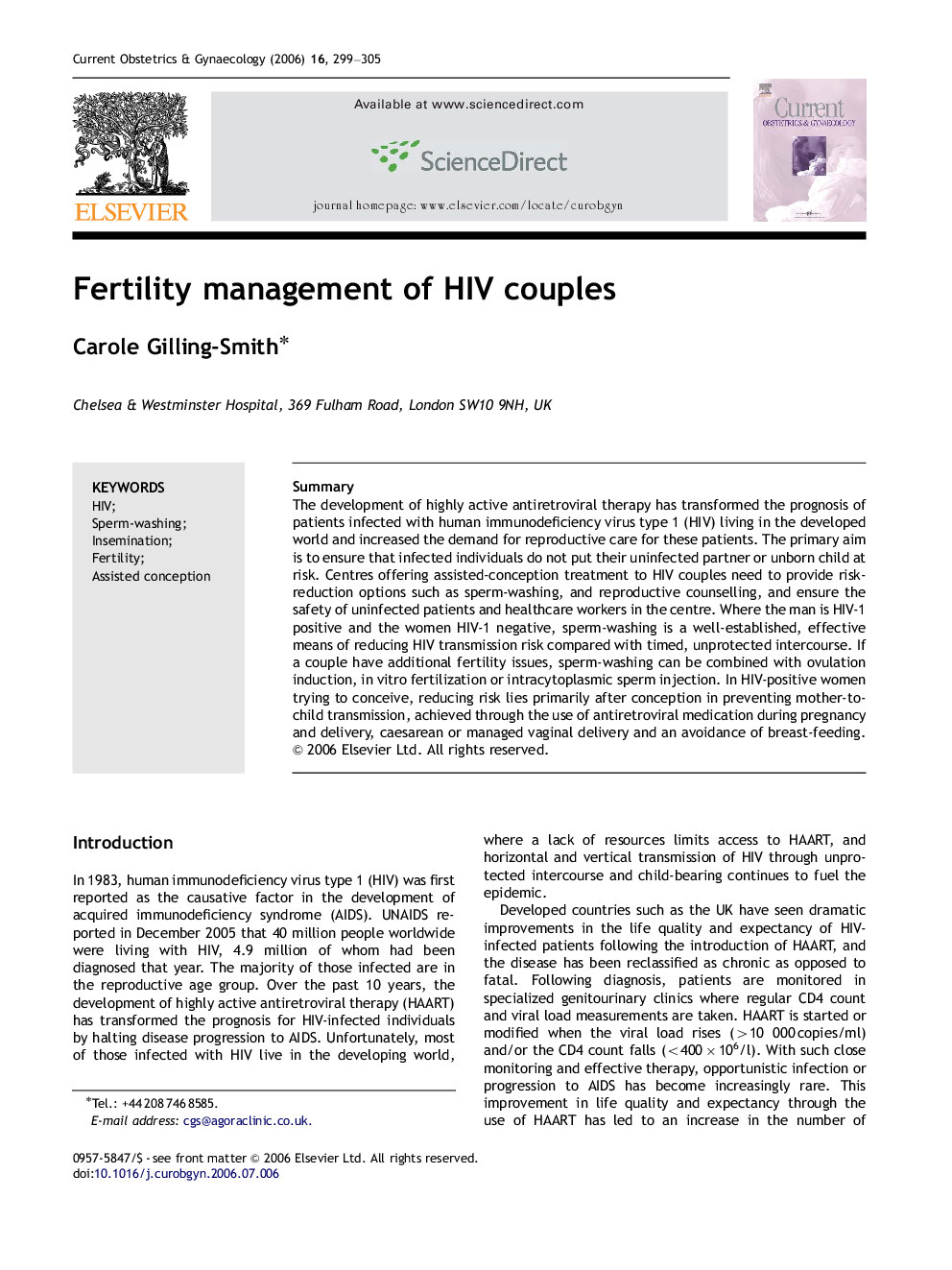| Article ID | Journal | Published Year | Pages | File Type |
|---|---|---|---|---|
| 3916314 | Current Obstetrics & Gynaecology | 2006 | 7 Pages |
SummaryThe development of highly active antiretroviral therapy has transformed the prognosis of patients infected with human immunodeficiency virus type 1 (HIV) living in the developed world and increased the demand for reproductive care for these patients. The primary aim is to ensure that infected individuals do not put their uninfected partner or unborn child at risk. Centres offering assisted-conception treatment to HIV couples need to provide risk-reduction options such as sperm-washing, and reproductive counselling, and ensure the safety of uninfected patients and healthcare workers in the centre. Where the man is HIV-1 positive and the women HIV-1 negative, sperm-washing is a well-established, effective means of reducing HIV transmission risk compared with timed, unprotected intercourse. If a couple have additional fertility issues, sperm-washing can be combined with ovulation induction, in vitro fertilization or intracytoplasmic sperm injection. In HIV-positive women trying to conceive, reducing risk lies primarily after conception in preventing mother-to-child transmission, achieved through the use of antiretroviral medication during pregnancy and delivery, caesarean or managed vaginal delivery and an avoidance of breast-feeding.
